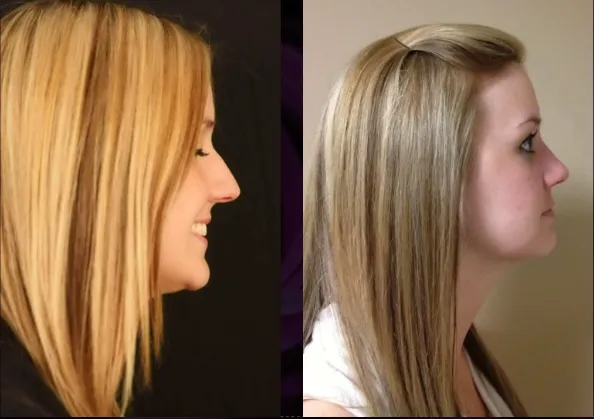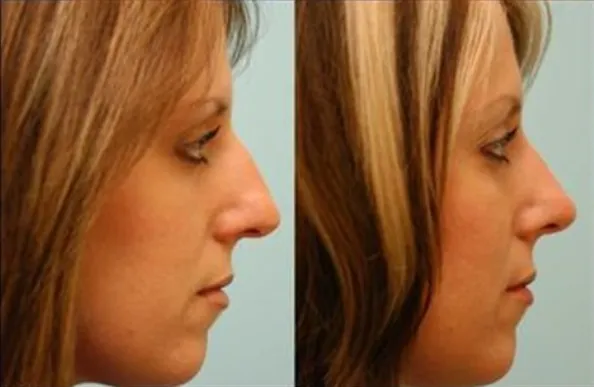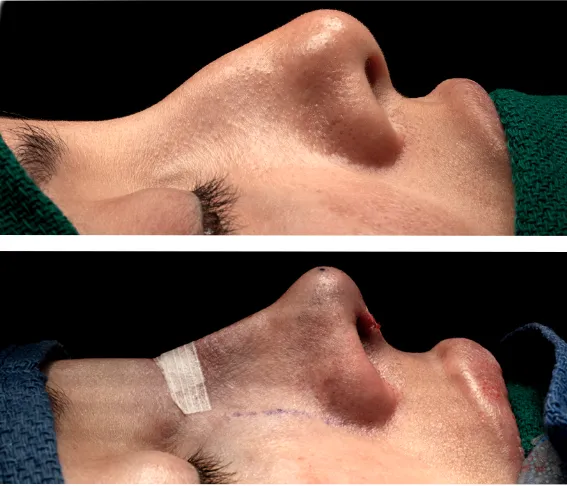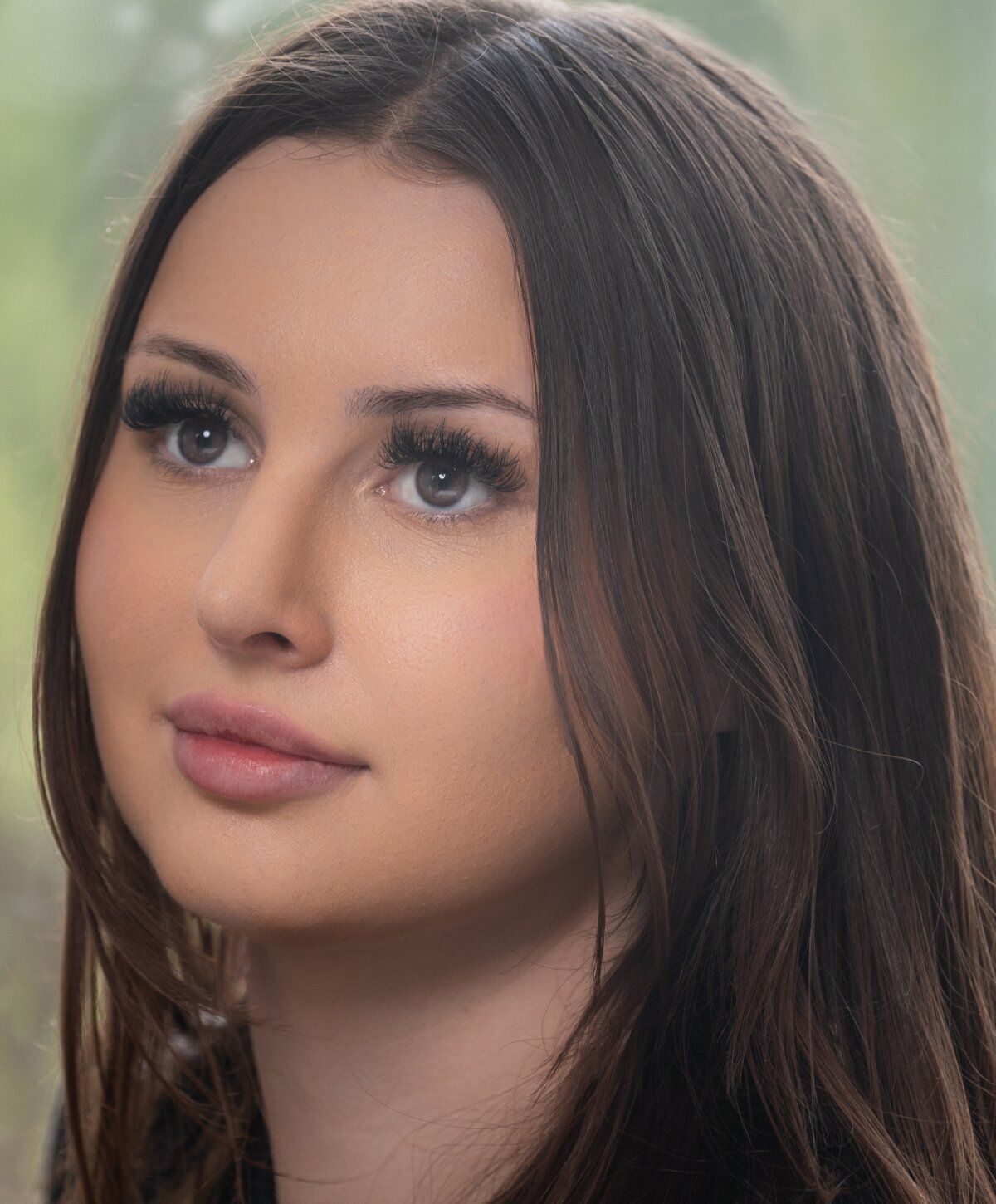



Everyone’s nose is different, but we have certain ways of describing many common nose shapes. Let’s take a closer look. There are numerous ways to classify noses. Identifying each and every way to classify noses is beyond the scope of this web page. What we will do is describe some of the most common adjectives used to describe noses. Take a look at our ethnic rhinoplasty page for more information about adapting nose surgery to different ethnic communities.

When I use these words, almost everyone has a picture in their head of what a Barbie nose is. It is a very feminine nose, with a curved dorsum, a small supratip break between the dorsum and the tip structures, a sharply defined tip, and a rotation angle of approximately 98-100 degrees. In plain English it is a cute, feminine nose. Please note how this cute and feminine nose fits on this patient. It looks “just right”. For a 5’10” brunette, this nose might not work. This is why analysis during the consultation phase is so important.

A Greek nose is another aesthetically pleasing nose. It is characterized by a straight dorsal profile. Other identifying characteristics of a Greek nose are small nostrils, a defined nasal tip, and no bumps/humps of the dorsum. This type of nose generally fits better for taller women and men.

The bulbous nose is typified by a large nasal tip, poor tip definition, large lower lateral cartilages, and an increased thickness of the soft tissue envelope. The goals in this type of nose are to increase support of the nasal tip, and increase definition of the nasal tip. The Athre Strut described in the dorsal preservation page is the ideal technique to achieve these goals.
Not every patient’s nose falls into one of these neat categories. The purpose of these descriptions is to identify a few categories to help the communication process between surgeon and patient.
